New Discoveries
 Welcome to the New Discoveries blog! City of San Diego City Clerk Archives staff use this area to upload newly rediscovered documents from San Diego’s history. In their duties, staff often find unique and interesting pieces of history they want to bring to the public. Those documents are uploaded here and then organized into their appropriate Collection, or a new Collection is created. Please check back frequently for fascinating new finds and discoveries!
Welcome to the New Discoveries blog! City of San Diego City Clerk Archives staff use this area to upload newly rediscovered documents from San Diego’s history. In their duties, staff often find unique and interesting pieces of history they want to bring to the public. Those documents are uploaded here and then organized into their appropriate Collection, or a new Collection is created. Please check back frequently for fascinating new finds and discoveries!
Published on
September 25, 1978 - PSA Flight 182 Crash
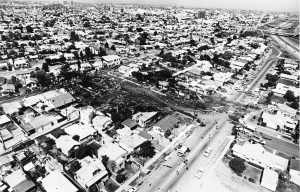
Download Image
Here's a photo capturing the scene after Pacific Southwest Airlines Flight 182 crashed in 1978. The flight was headed from Sacramento to San Diego on September 25th, with a stopover in Los Angeles. The plane collided with a private aircraft over San Diego, resulting in the loss of all 135 people on board PSA 182, the two pilots of the private plane, and seven individuals on the ground. This was the deadliest air crash in the United States at the time.
Published on
1915 – Children’s Day
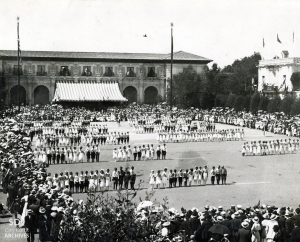
Download Image
Please check out this interesting photo from the Panama Exposition! You can see some cheerful kids performing in the plaza to celebrate Children’s Day. The Panama California Exposition took place in Balboa Park in San Diego from January 1, 1915, to January 1, 1917. It celebrated the opening of the Panama Canal and was also a way to showcase San Diego as the first U.S. port of call for ships heading north after passing through the canal.
Published on
1971-The Youngest Elected City Council Member
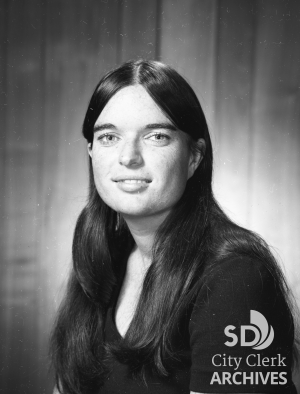
Download Image
In 1971, Maureen O'Connor became the youngest person ever elected to the San Diego City Council. A 25-year-old Rosary High School physical education teacher was the youngest person elected to the San Diego City Council and in 1986 became the first woman elected as the city’s mayor.
Published on
January 7, 1969- First Appointed Black City Council Member
On January 7, 1969, the City Council appointed Leon Williams as the first Black City Councilmember to represent the Fourth District. This significant resolution marks a historic milestone in the representation within the city's governance.
Published on
April 25, 1977- “Medical History in the Making”
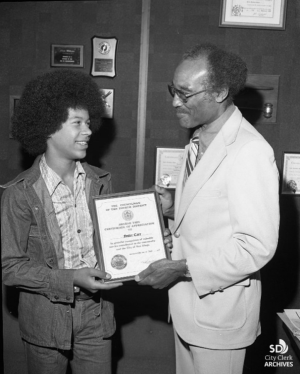
Download Image
Here is a photo of Foster P. Carr receiving a recognition award by the late San Diego Councilman Leon Williams on April 25, 1977. Foster graduated from Morse High School and went on to Harvard College and obtained a BA degree in Biochemical Sciences in 1982. Dr. Foster Carr MD also obtained a Doctor of Medicine degree and partially completed a PhD in Cancer Biology from Stanford Medical School in 1988. He has nurtured his passion for the field of telemedicine since 1994, when he created the first portal for personalized medical services. Cited Source article from https://www.telemedical.com/Telemedical/FPC.html
Published on
1939- “Bon Voyage”
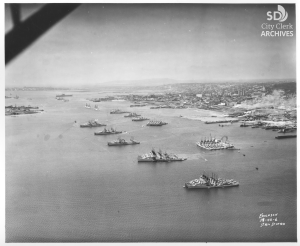
Download Image
Here is a historical photo of the Naval Ships near Chollas Creek in 1939. Now in 2025, the Chollas Creek is a great place to enjoy some outdoor fitness activities such as running, walking and meditation.
Published on
January 1976- “Riding in Style”
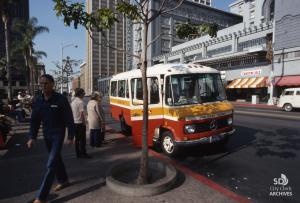
Download Image
Please look at his photo of a Mercedes O309D 19-Passenger metro bus on Broadway near Horton Park in 1976. The buses were bought as part of 'San Diego Action Plan 1974 developed by San Diego Transit's General Manager Tom Prior and his staff. The goal was to grow transit usage by 50 percent by 1975 via versatility and adaptability, inherent in small buses, by increasing frequency, extending routes, and adding new ones. A 1975 'American City and County' magazine article referred to San Diego as a model for the mass transit industry.
Published on
February 7, 1968- The Beverly Hillibillies Co-Star
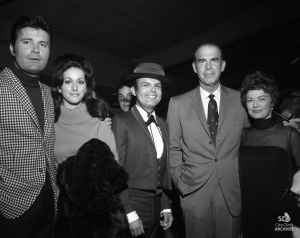
Download Image
Here is an interesting photo of Max Baer (known as Jethro in The Beverly Hillbillies) at the 1968 Andy Williams San Diego Open Pro-Am Award ceremony. Held at Vacation Village, Baer was the honorary award winner that year. Pictured is his wife, Joanne Kathleen Hill, Fred MacMurray and his wife June Haver, and an unidentified man with a hat on. Max was an athlete and avid golfer.
Published on
1909- “The Bronze Eagle”
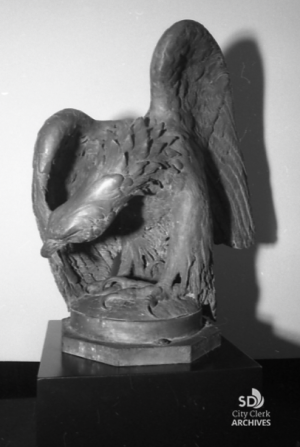
Download Image
1909- “The Bronze Eagle” Check out this historical photo of an eagle sculptor designed by Felix Peano. This unique sculpture sat on top of the Horton Plaza water fountain. Alonzo Horton gave Horton Plaza to the city in 1870.
Published on
Undated- “A Bicycle Built for Four Riders”
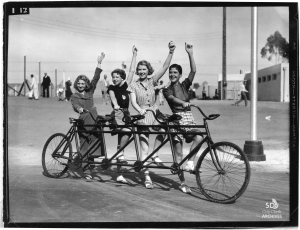
Download Image
Undated- “A Bicycle Built for Four Riders” Here is a group photo of four ladies riding a bicycle built to ride four riders. The first bicycle built for four riders was invented by Mikael Pedersen in the late 1800’s It weighed 64 pounds and was used as a mode of transportation for wealthy individuals.
Published on
1973 - First San Diego Female Lifeguard
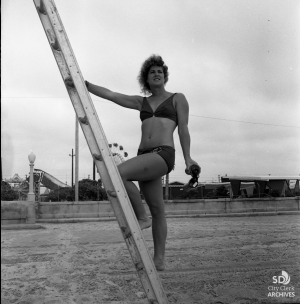
Download Image
In 1973, Carol Tyler made history as the first female lifeguard in San Diego. Her achievement marked a significant milestone for women in the field; however, the lifeguard profession largely remained male-dominated until the premiere of the original title "Baywatch" from 1989 to 1999, which helped to bring more visibility to women in lifeguarding roles.
Published on
2025-"Museum Month"
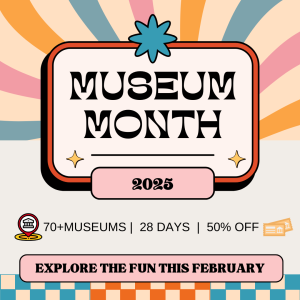
Download Image
February 1, 2025 - "Museum Month" invites you to discover the enjoyment of exploring local culture throughout the month of February. Over 70 museums in the San Diego area will be offering a 50% discount on admission.
Published on
1939-"The Guardian of Water Fountain"
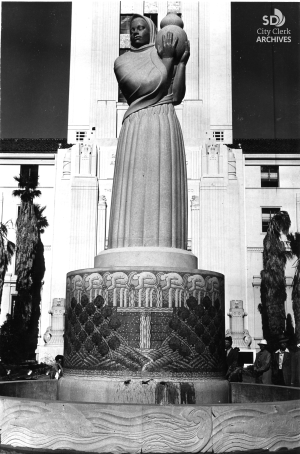
Download Image
Here is beautiful statue of the Donal Hord's Guardian of Water Fountain at the County Administration Building after installation was completed in May 1939. Hord spent two years forming the Guardian from a 22-ton granite block from a Lakeside quarry. The combined statue and base rise 22 feet, 3 inches, with the statue itself reaching a height of 13 feet, 3 inches. The Guardian of Water was dedicated on June 10, 1939. It symbolizes San Diego's guardianship over one of its most precious resources - water.
Published on
1889- “The San Diego County Courthouse”
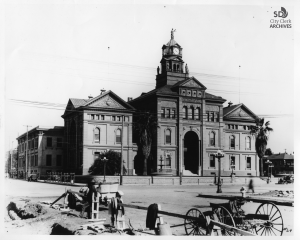
Download Image
In 1889, the San Diego Court Courthouse was built and donated by downtown founder Alonzo E. Horton. The Italianate-style building was designed by architects Comstock and Trotsche of San Francisco and included a bell and clock tower, statues of four presidents, a 10-foot gilded statue of Justice and 42 stained-glass windows honoring the states of the Union at the time. It was demolished in 1959.
Published on
Undated- “The History of the Ballot Box”
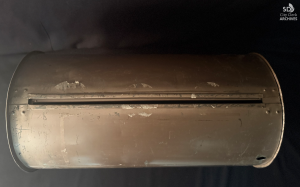
Download Image
Checkout out this metal ballot box used in the early elections. Typically made of wood or metal, ballot boxes feature a hinged top which is secured with a lock during the time votes are cast. A thin slot is cut into the top, which is large enough to accept a paper ballot. The slot was narrow enough that the ballot cannot be removed manually through the opening. Small and portable, ballot boxes were delivered to designated polling places during election season.
Published on
1930-The Gutierrez Spanish Tent Show
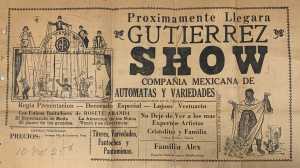
Download Image
Here is a tent show pamphlet advertising the infamous “Gutierrez Tent Show”, or Gutierrez Show Compañía Mexicana de Autómatas y Variedades, which was a traveling tent show that came regularly at least during the 1930s and 1940s to the Barrio Logan section of San Diego.
Published on
February 2, 1895 - Street Signpost
In 1895, the Office of the Board of Public Works Department submitted a petition to the City Common Council for approval to construct and design the “City’s First Official Street Signpost.” Here’s to one-hundred and twenty-nine years of signs that provided information on direction and distance!
Published on
1969-Fire Alarm Communications Building
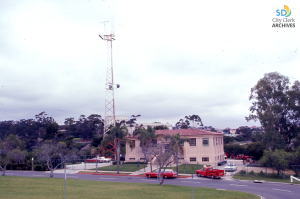
Download Image
Take a glance at this historical image of the “San Diego Fire Department's Fire Alarm Telegraph Communications Center,” 1969. This center location provided services from 1928 - 1970 when the city moved its fire alarm communications network into the new city hall complex downtown. The building was designed in 1927 by Robert Snyder and his partner William Templeton Johnson and constructed by J. A. Hunt and Company.
Published on
1930- The People’s Bridge
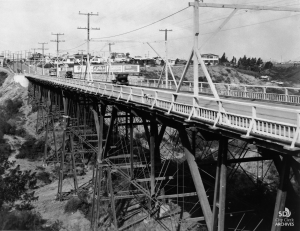
Download Image
Here’s a historical image of the original First Avenue Bridge crossing over Maple Canyon. Erected at the urging of property owners under the Improvement Act of 1911, replaced with a steel arch bridge in 1931 that had been completely assembled on the floor of a mid-western fabrication plant, dismantled, and shipped to San Diego. It was renovated and retrofitted in 2010. The bridge is located in Bankers Hill on First Avenue, between Nutmeg and Palm.
Published on
1929 – S.S. Ferry “Coronado” on Trial Trip

Download Image
S.S. Ferry “Coronado” was running trials in San Francisco Bay prior to arrival in San Diego. It was constructed for the San Diego and Coronado Ferry Company by the Moore Dry-Dock Company on April 11, 1929. In order to accommodate the growing number of people visiting the Coronado peninsula from San Diego, Elisha S. Babcock, Jr. and Hampton L. Story created the San Diego & Coronado Ferry Co. in April 1886 and the ferry completed its first run in August.

